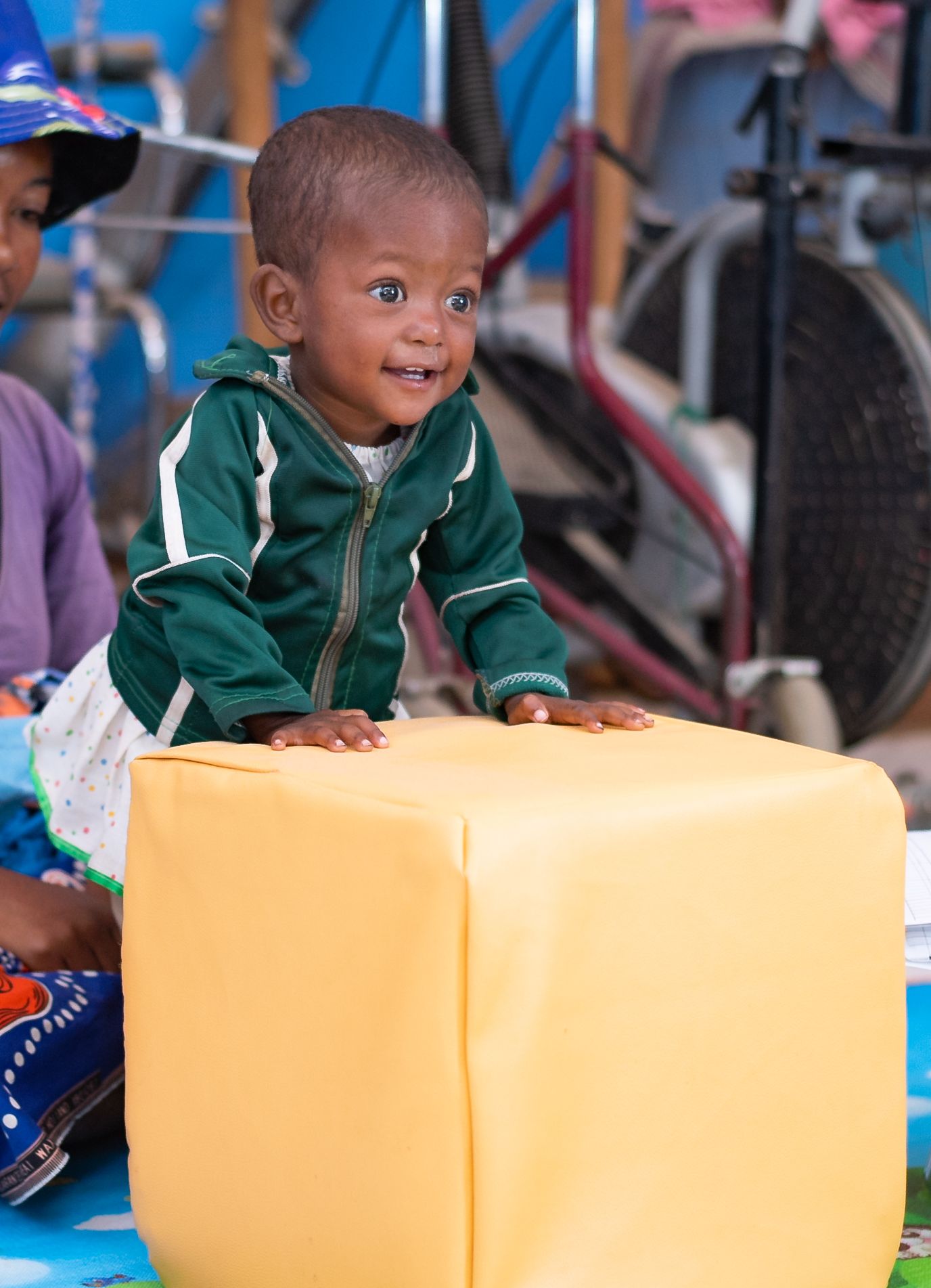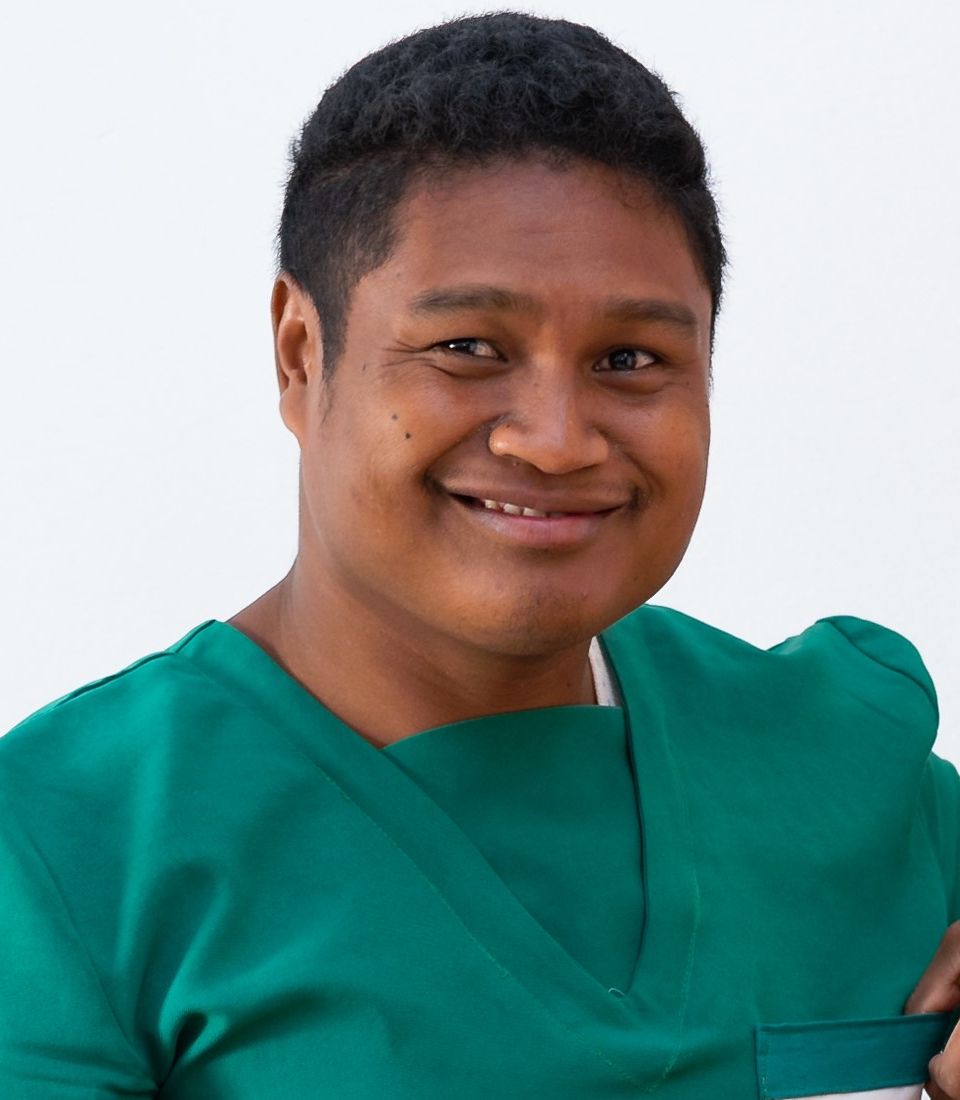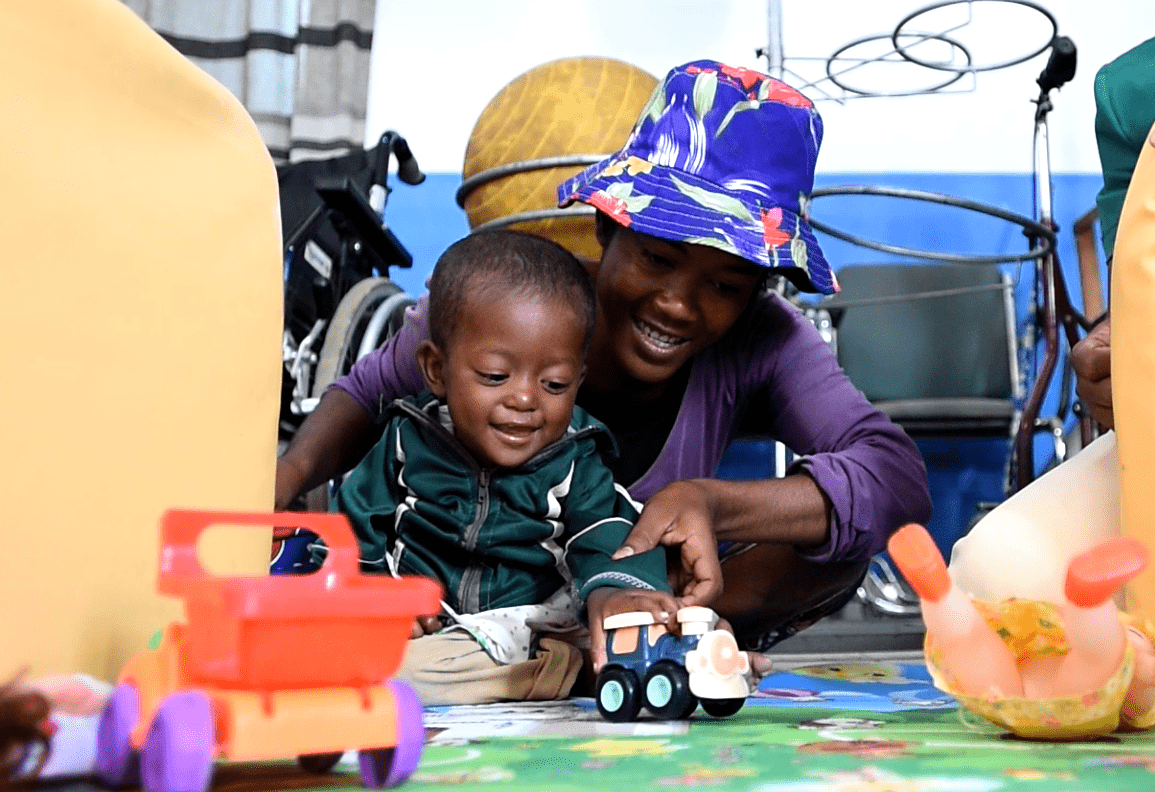The impact of malnutrition on Sosiany
 “When Sosiany was three months old, I noticed that she wasn’t developing normally,” says her mother, Naliny. “She wasn’t able to hold her head up. Then, at six months, she could not sit up on her own.”
“When Sosiany was three months old, I noticed that she wasn’t developing normally,” says her mother, Naliny. “She wasn’t able to hold her head up. Then, at six months, she could not sit up on her own.”
Concerned, Naliny brought Sosiany to see a doctor who determined that she was severely malnourished and it was interfering with her growth and development. She is now 17 months old, but her mental and motor development are more similar to those of a six-month old baby. These developmental delays can consolidate over time and lead to permanent disabilities if left untreated.
The doctor prescribed her “plumpy nut,” a nutritional supplement for treatment of severely malnourished children, and referred her to the rehabilitation center at the regional hospital in Tuléar to see if Sosiany could benefit from HI’s stimulation therapy.
Early childhood stimulation therapy for malnourished babies and young children is a form of strategic active play that stimulates motor skills and cognitive development by engaging the child with toys and providing individual attention. HI's rehabilitation specialists have trained physical therapists in Tuléar, Madagascar to use the technique alongside emergency nutrition initiatives to give children the best chance of survival, improve quality of life and prevent the long-term consequences of malnutrition.
Rehabilitation disguised as play
Today, Sosiany is attending her second session with Denis, a physical therapist at the rehabilitation center, who we trained in stimulation therapy in October 2021.
 “In the beginning, we let the child play with whatever they are drawn to. The first goal is to get them comfortable,” Denis says. “Then, you choose activities depending on the specific objective of each child. For example, Sosiany is not able to sit on her own, so we play in positions that train her leg muscles and get her used to sitting for longer periods of time.”
“In the beginning, we let the child play with whatever they are drawn to. The first goal is to get them comfortable,” Denis says. “Then, you choose activities depending on the specific objective of each child. For example, Sosiany is not able to sit on her own, so we play in positions that train her leg muscles and get her used to sitting for longer periods of time.”
Each activity plays a specific role in Sosiany’s development. Holding a toy above her head will help her practice reaching. Drawing with pens and pencils will start to improve her grasp. Simple actions like kicking a ball or pushing a plastic car help develop her movement, interactions and reflexes.
Throughout each session, Denis also explains to Naliny how to continue the exercises at home.
“Sosiany doesn’t have any toys of her own, but she likes to  drum on a basin they have for washing clothes,” Denis explains. “To encourage her to crawl, she can simply move the basin further away. Then Sosiany will have to crawl over to it before she can play on it. We can adapt any activity to stimulate the child, you just need to know what she likes to do.”
drum on a basin they have for washing clothes,” Denis explains. “To encourage her to crawl, she can simply move the basin further away. Then Sosiany will have to crawl over to it before she can play on it. We can adapt any activity to stimulate the child, you just need to know what she likes to do.”
After about five sessions of stimulation therapy, children generally start to show improvements, but the length of therapy is adapted to the needs of each child based on their progress.
Inspired by the care her daughter is receiving, Naliny says she hopes Sosiany will grow up to be a doctor so that one day she can heal others.



 “When Sosiany was three months old, I noticed that she wasn’t developing normally,” says her mother, Naliny. “She wasn’t able to hold her head up. Then, at six months, she could not sit up on her own.”
“When Sosiany was three months old, I noticed that she wasn’t developing normally,” says her mother, Naliny. “She wasn’t able to hold her head up. Then, at six months, she could not sit up on her own.” “In the beginning, we let the child play with whatever they are drawn to. The first goal is to get them comfortable,” Denis says. “Then, you choose activities depending on the specific objective of each child. For example, Sosiany is not able to sit on her own, so we play in positions that train her leg muscles and get her used to sitting for longer periods of time.”
“In the beginning, we let the child play with whatever they are drawn to. The first goal is to get them comfortable,” Denis says. “Then, you choose activities depending on the specific objective of each child. For example, Sosiany is not able to sit on her own, so we play in positions that train her leg muscles and get her used to sitting for longer periods of time.”  drum on a basin they have for washing clothes,” Denis explains. “To encourage her to crawl, she can simply move the basin further away. Then Sosiany will have to crawl over to it before she can play on it. We can adapt any activity to stimulate the child, you just need to know what she likes to do.”
drum on a basin they have for washing clothes,” Denis explains. “To encourage her to crawl, she can simply move the basin further away. Then Sosiany will have to crawl over to it before she can play on it. We can adapt any activity to stimulate the child, you just need to know what she likes to do.”
